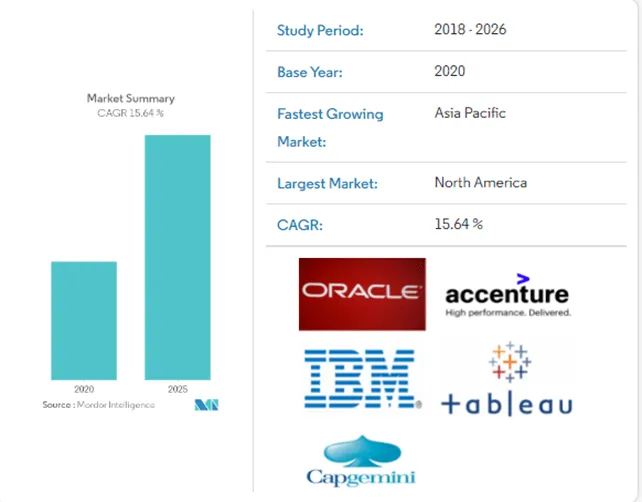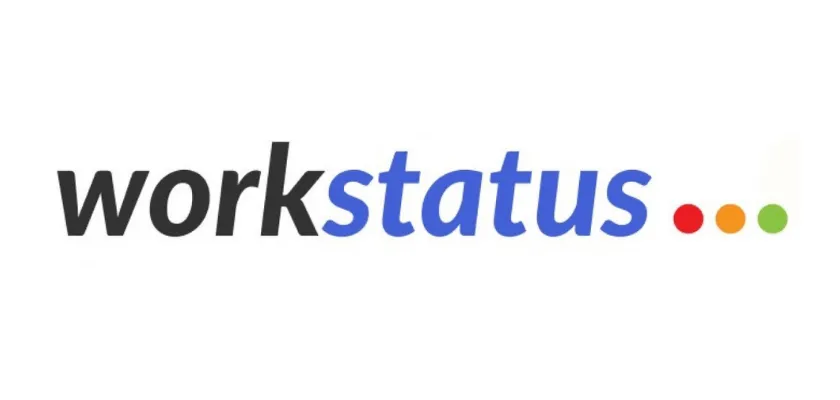Table of Contents
With the shift towards remote work and hybrid work models, employers and employees both find it challenging to keep track of productivity, engagement, and performance.
In this context, workplace analytics has emerged as a critical tool for both the parties involved to measure, monitor and optimize the dynamics of their performance. To understand more in-depth, let’s have a look at the conversation between two employees of different organizations-
Employee A: I have been reporting to the office daily, but still, my manager pushes me to be more productive every day. He never seemed to be satisfied with my performance.
Employee B: Do you take leaves frequently or long breaks while working?
Employee A: I hardly take any leaves or breaks during work. I never waste my time on social media or visiting any irrelevant websites while working.
Employee B: Why don’t you show your work analytics for a better picture of your productivity? Must you be keeping track of your productivity metrics?
Employee A: No, our company doesn’t have any means to monitor productivity metrics. Neither do I keep track of it?
Employee B: That’s quite shocking!! Because I have been working remotely for a reputed firm and my manager is satisfied with my work, he even guides me where I need to upskill myself to stay competitive in the market.
Employee B: Workplace Analytics is a reporting product that gives any organization a complete picture of their employees to help them interpret historical trends and build predictive models that lead to insights and improved decisions in the future.
Employee A: It sounds great. It is an ideal solution for both employees and the organization. I must recommend it to my manager and team. Thanks for such a fantastic idea.
Employee B: Welcome!! I hope your manager will be satisfied when we meet next time.
After going through this conversation, we believe that you don’t doubt whether Workplace Analytics is essential.
But we can smell what is cooking in your mind. You must be thinking-
How can Workplace Analytics accelerate business growth? Which tool can provide the best Workplace Analytics?
Hold on!!
We have answers to all of your questions. Read on to learn what Workplace Analytics has to offer you.
Workplace Analytics- Market Insights
According to the Information Services Group, almost 60% of businesses anticipate HR SaaS technology solutions to improve the employer user experience globally.

Do you know why it is so?
Because the future looks promising
The Workforce Analytics market was worth $765.72 million in 2020 and is anticipated to reach $1831.13 billion by 2026, with a CAGR of 15.64% between 2021 and 2026. Businesses require speed, flexibility, and creativity to distinguish themselves from their competition. It has focused on workforce strategy and the investment made in employees to help companies achieve their objectives.
It’s the right time to reassess your strategies and go for a suitable Workplace Analytics solution to stay ahead of the competition-
What Key Areas Should Workplace Analytics Track?
The managing director of Moody’s Analytics has correctly said that-
“Find that individual story. There’s such a richness of data, and the longer that we work with that data, the quicker we’ll discover that richness.”So your work is to bring out that richness from every individual and put it into your business for unmatched growth.
But the question is how to bring out that richness.
What key metrics do we consider while dealing with analytics?
Let’s check out
-
Productivity Index

The modern-day mindset is all about working smarter, not harder. In a world where more and more people work from home or on their own time rather than 9-5 jobs at a traditional office space.
It makes sense that performance can no longer be measured by how much you show up for work each day but through what your employees have accomplished while working from anywhere.
Thus, the productivity index is an essential factor while working with analytics as it measures how effective employees are in achieving their goals within the given time frame.
This metric can be compared to industry standards and help you identify which of your processes need improvement or which are already performing well and delivering the optimum results.
However, this does provide some unique difficulties in defining precisely “productivity levels,” thus requiring careful consideration when setting goals.
—————————————————————————————-
Also read: 7 KPIs to Improve Software Developers Productivity
——————————————————————————————
-
Overtime Expenses

Overtime, especially when it is planned, can quickly become a financial burden and disrupt the flow of your business operations. By implementing workplace analytics, you can compare overtime expenses to the expected output or work done within a specific period of time in order to identify which processes are overworking their employees or if additional staff members need to be hired to lighten the burden.
-
Voluntary Turnover Rate
Not all turnover is harmful, and it’s not always a bad thing. Ideally, individuals who do not fit in with the company should leave.This is excellent turnover, but when your essential talent departs, trouble looms. This is why you need workforce analytics to keep track of both your high potential and your low potential turnarounds to ensure your company isn’t losing talent. It needs to be competitive.
Since you are in the business of increasing productivity and employee satisfaction, tracking voluntary turnover can help increase efficiency and reduce costs.
-
Absence Rate
Another area of focus in workforce analytics is the absence rate. Knowing how and why employees take time off from work helps employers anticipate staffing needs, improve safety, increase attendance rates, and reduce costs related to sick days or unplanned absences.
By creating policy enforcement guidelines and tracking employee performance through data analysis, companies can create better ways to manage absenteeism and ensure better attendance and overall productivity.
How Can Workplace Analytics Contribute To The Substantial Growth Of A Business?

Workplace Analytics can help in the substantial growth of your business through the following ways-
-
Enhance Decision-Making Power
Workplace Analytics provides real-time results and updates of what has been predicted or anticipated by you or your company’s plan.
Hence, it helps develop more accurate data required for the decision-making work sphere for limiting risks and saving money on wrong decisions that could lead to failure or financial losses.
-
Understand The Needs And Satisfaction Level Of Your Employees
A lot more than simply seeking firing and hiring information, workforce and people analytics can assist a business in determining why its workers aren’t performing at their best and the variables that are affecting productivity. This is aimed at sustaining the present staff instead of replacing it. The aim is to identify those areas that impact performance and engagement and overcome them by creating better conditions for the employees.
-
Find And Automate The Areas That Need Improvement
With the help of workforce and people analytics, it is easy to discover processes that can be streamlined or automated. This could accelerate projects and reduce costs in several ways.
In addition, it helps detect any discrepancies or irregularities so organizational compliance remains secure and intact at all times, leading to better compliance management and cost savings.
-
Better Hiring Process
Finding new talent is always difficult, regardless of a business’s size or scope. Workforce analytics can highlight precisely what a department needs from a new hire based on previous candidates’ success and the organization’s requirements.
More significantly, they may interpret new applicants based on this historical data to see whether they would be a good fit or not. For instance, a candidate who possesses similar traits to successful applicants in the past would be a good fit.
Having a data-driven process for recruitment can reduce the amount of time wasted on interviewing candidates who have nothing to offer and, thus, help attract better talent in the long run.
So these were some of the key areas that Workplace Analytics can track and how these can contribute to the substantial growth of a business. But that’s not all. You need to find a suitable Workplace Analytics solution for you.
And this is where the Workstatus comes in.
Workstatus is a leading provider of Workplace Analytics that helps companies manage workforce productivity while maximizing efficiency with an eye on cost savings.
Why Trust Workstatus For Comprehensive Workplace Analytics?

The top reasons to trust Workstatus are the annual accuracy, reliability, and integrity. Robust reporting features include powerful analytics, so you have the data you need for planning both short-term processes and long-term strategies.
It is trusted by hundreds of companies to provide comprehensive workforce analytics, including total time tracking, monitoring employee productivity, selfie verification of work hours, absence management support, and payroll integration for accurate time reporting and billing.
Being the best workforce management system, Workstatus can optimize your payroll costs while maintaining compliance with government regulations, minimizing the risk associated with pay errors or workplace accidents due to inaccurate records.
———————————————————————————————————————-
Also, read : The Race for Best Workforce Management Software
———————————————————————————————————————-
Final Thoughts
Focusing your data gathering on the inside may help you enhance your business’s performance. People analytics can increase productivity in a company by focusing on its employees and finding ways to empower them, resulting in happier and more productive coworkers.Workplace Analytics can be used to understand better the needs and satisfaction level of your employees, which will, in turn, help you make more informed decisions about how to grow your business.
Workstatus is one such productivity management software that offers a comprehensive suite of workplace analytics tools for companies like yours. Being the best productivity tracking software, it offers reports on productivity measurement, voluntary turnover rate, overtime expenses, and absence rates. Let us show you what we have to offer today by scheduling a demo with our team today.
That’s it for today!!
Thanks for reading
FAQs
1. Why is Workplace Analytics important?
Workplace Analytics helps organizations understand how employees are performing and feeling in their roles, identify areas of improvement or opportunity, and compare performance across different locations or departments.
Additionally, data-driven decision-making allows organizations to optimize resource usage, measure output against goals, plan capacity accurately, allocate resources effectively, and improve collaboration.
All this provides a more engaged workforce that stays productive and motivated even when working remotely.
2. What Kinds of Insights Can Be Accessed?
Workplace Analytics can uncover insights related to how teams are performing, identify team strengths and weaknesses, highlight potential areas for improvement in the organization, and provide a clear picture of what changes need to be made for growth and success












